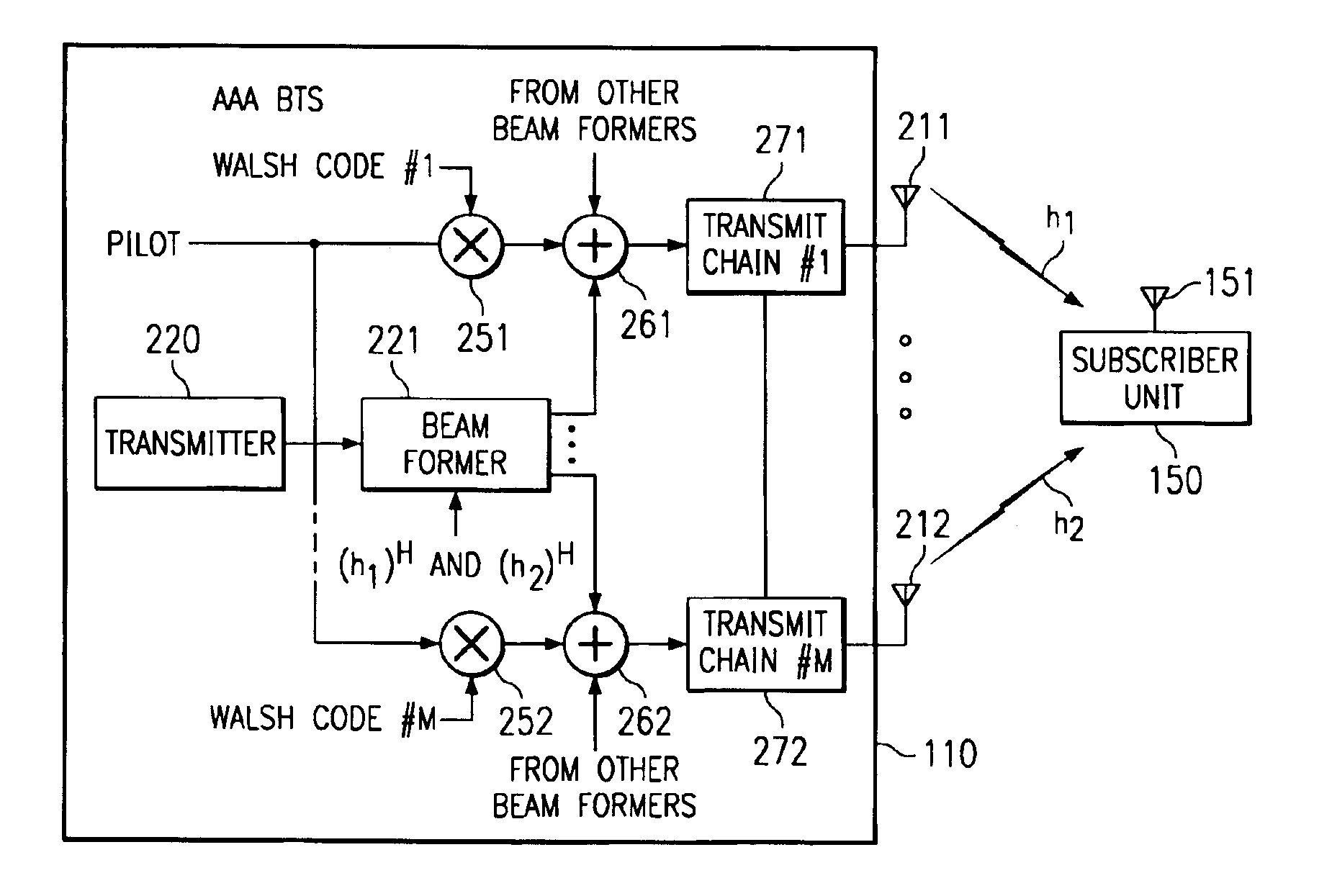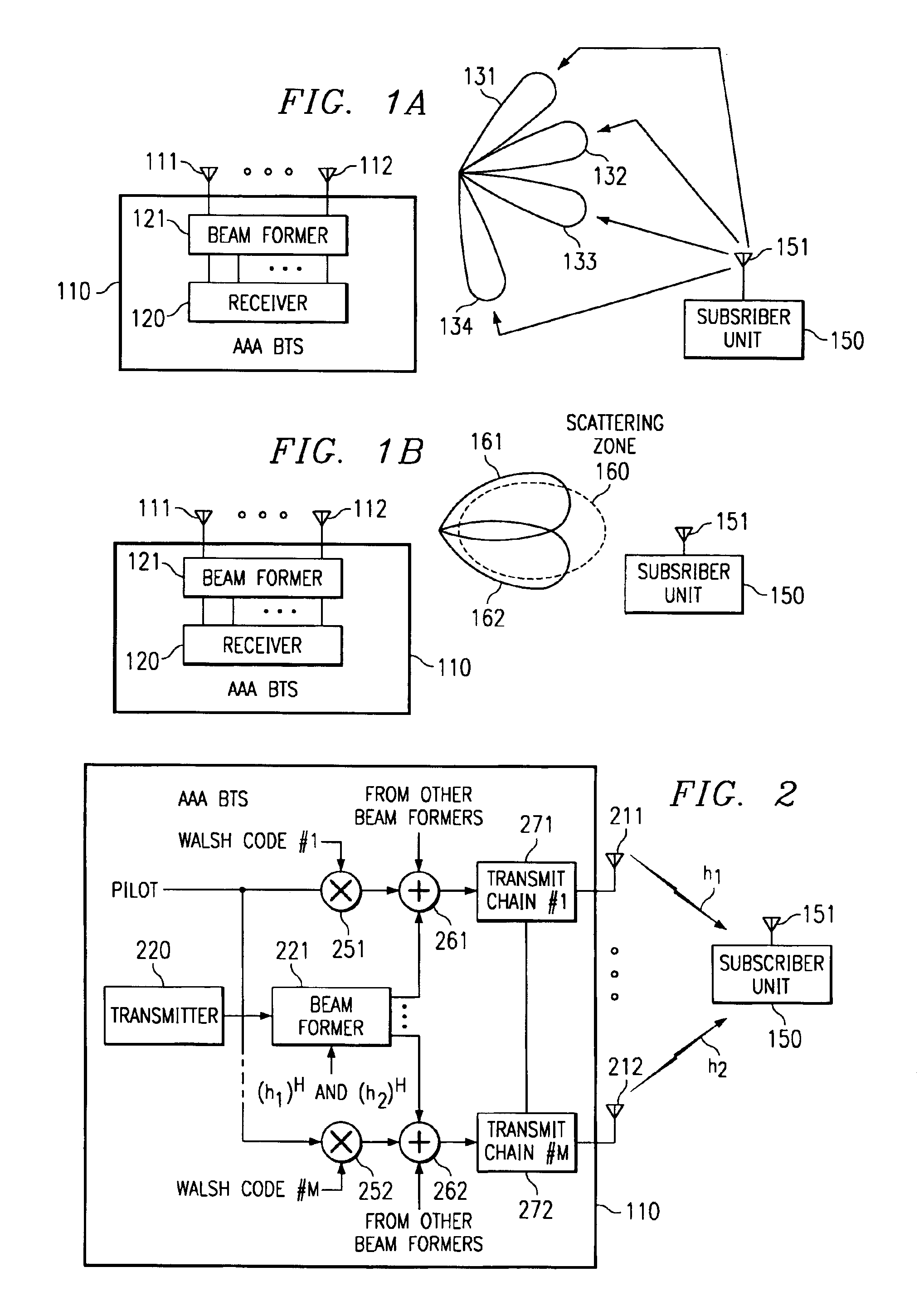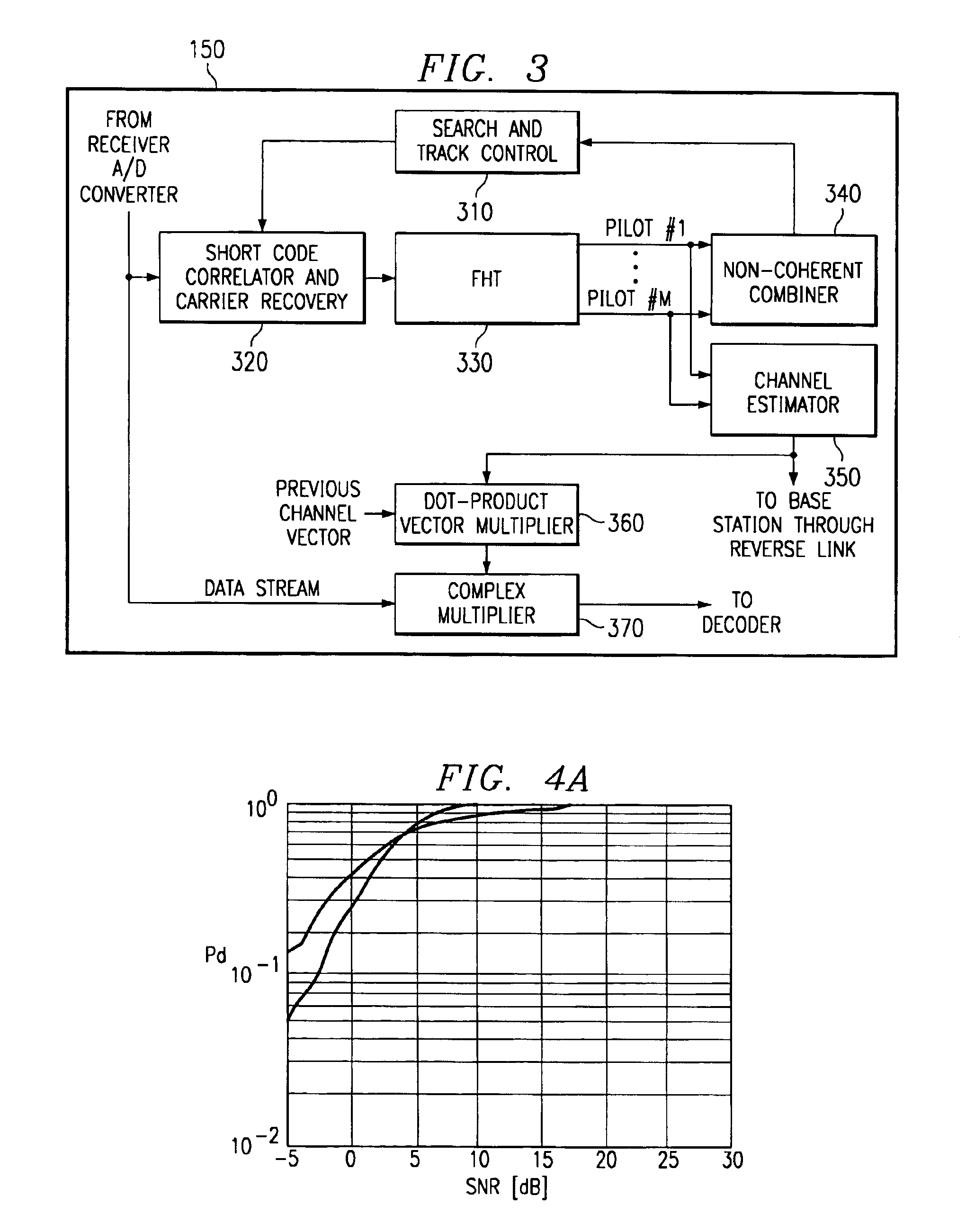Adaptive antenna array wireless data access point
- Summary
- Abstract
- Description
- Claims
- Application Information
AI Technical Summary
Benefits of technology
Problems solved by technology
Method used
Image
Examples
Embodiment Construction
[0030]In providing wireless communications, focusing energy in the direction of a receiving system, such as a subscriber unit in a cellular system, typically reduces the amount of power needed in order to maintain a given service quality. Accordingly, the use of relatively narrow antenna beams to focus energy in wireless communications both operates to increase signal quality at an intended receiver unit as well as to limit interfering energy experienced at an unintended receiver unit.
[0031]An array of antenna elements may be utilized to focus power received from a subscriber unit to the base station receiver (reverse or up link) and power transmitted to a subscriber unit by the base station transmitter (forward or down link). For example, phased arrays having circuitry coupled thereto to provide adaptive signal processing, e.g., adaptive beam forming, may be utilized to provide relatively narrow antenna beams focusing energy of signals communicated between a base station and an ass...
PUM
 Login to View More
Login to View More Abstract
Description
Claims
Application Information
 Login to View More
Login to View More - R&D
- Intellectual Property
- Life Sciences
- Materials
- Tech Scout
- Unparalleled Data Quality
- Higher Quality Content
- 60% Fewer Hallucinations
Browse by: Latest US Patents, China's latest patents, Technical Efficacy Thesaurus, Application Domain, Technology Topic, Popular Technical Reports.
© 2025 PatSnap. All rights reserved.Legal|Privacy policy|Modern Slavery Act Transparency Statement|Sitemap|About US| Contact US: help@patsnap.com



